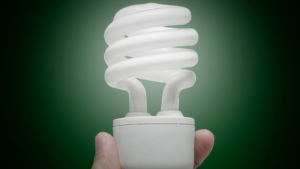 With energy prices rising across the United States, it’s no surprise homeowners are looking for ways to save money. Americans paid 14 percent more for electricity in 2022 than they did in 2021 and most can expect to pay even more this year. New Jersey residents, for instance, have already seen their power bills rise 3.3-6.9 percent since June. Energy-saving habits are one way to reduce costs, but technology offers a more reliable solution. But do energy-saving devices really work or are they a waste of money? And if so, which ones?
With energy prices rising across the United States, it’s no surprise homeowners are looking for ways to save money. Americans paid 14 percent more for electricity in 2022 than they did in 2021 and most can expect to pay even more this year. New Jersey residents, for instance, have already seen their power bills rise 3.3-6.9 percent since June. Energy-saving habits are one way to reduce costs, but technology offers a more reliable solution. But do energy-saving devices really work or are they a waste of money? And if so, which ones?
Power Savers
One of the most heavily promoted energy-saving devices on the market, power savers claim to stabilize electrical current and reduce “dirty power” in your home. Though the phrase “dirty power” sounds alarming, it actually refers to a mundane phenomenon. You may not realize it, but the electricity that flows into our homes isn’t steady. It fluctuates, creating small power spikes. These spikes release unusable electrical bursts that are converted into heat, which is then either absorbed by your appliances or dissipated into the atmosphere.
Power spikes are not only wasteful, they also wear down your devices. Power savers protect them by storing excess energy and releasing it when the current dips, creating a smooth power flow, like a surge protector. However, contrary to their claims, power savers don’t improve energy efficiency, but energy quality. Smooth power flows reduce the strain on your appliances, which extends their lifespan.
What’s more, they do not affect resistive loads, which are found in passive electrical appliances such as toasters, lightbulbs, ovens, and heaters. As the name suggests, these devices resist the flow of electricity, generating heat and light in the process. Power savers only affect inductive loads, which are found in motorized devices such as computers, air conditioners, and refrigerators. (Loads are electrical circuits that consume power, as opposed to generators, which produce it, or batteries, which store it.)
Current and voltage are perfectly aligned in resistive circuits, but in inductive circuits, current peaks after voltage. In other words, the rate of electricity flow is strongest after the force on the electrons has begun to decline. Unless the majority of your energy consumption comes from inductive loads, it’s unlikely a power saver will make a noticeable dent in your power bills or do much to protect your appliances.
Energy-Saving Devices That Work
Though power savers don’t generally reduce power consumption, some energy-saving devices will. These are appliances engineered to run more efficiently or devices that give you more control over your energy use.
- LEDs (Light-Emitting Diodes). Semiconductor devices that emit light and use seventy-five percent less electricity than regular, incandescent bulbs.
- Motion Sensors. Ensure your lights only activate when there is someone in the room. A great way to light your garden and other outdoor spaces.
- Energy Star Devices. Appliances made with cutting-edge, energy-saving technology that use as little power as necessary. Installing an Energy Star appliance can reduce energy consumption by 10-15 percent.
- Smart Switches. Provide greater control over your lighting system. Installing a smart switch lets you activate lights remotely, create a lighting schedule, or adjust the brightness of each bulb, so electricity is only used when needed.
- Smart Thermostats. Like smart switches, smart thermostats provide greater control over your HVAC system. They allow you to adjust your heating and cooling systems remotely, so you can activate your furnace or air conditioner before you get home. Over time, these devices learn your needs and habits and automatically adjust their output for maximum efficiency.
- Power Saver Strips. Many modern appliances, such as smart TVs, don’t shut down when you turn them off. Instead, these energy vampires enter standby mode and continue drawing power throughout the day. Power saver strips automatically cut power to these devices, reducing electricity consumption by as much as ten percent.
Saving Money Long-Term
Agway does more than supply affordable energy. We protect your home. Our EnergyGuardTM program covers your heating, cooling, and electrical systems. When something goes wrong, our customers aren’t stuck paying hundreds or even thousands of dollars out of pocket. They turn to us instead. We send out a contractor to repair or replace all covered parts. Our team handles all the costs. There are no service fees or deductibles, and you’re enrolled as soon as you join, so don’t wait. Sign up today!